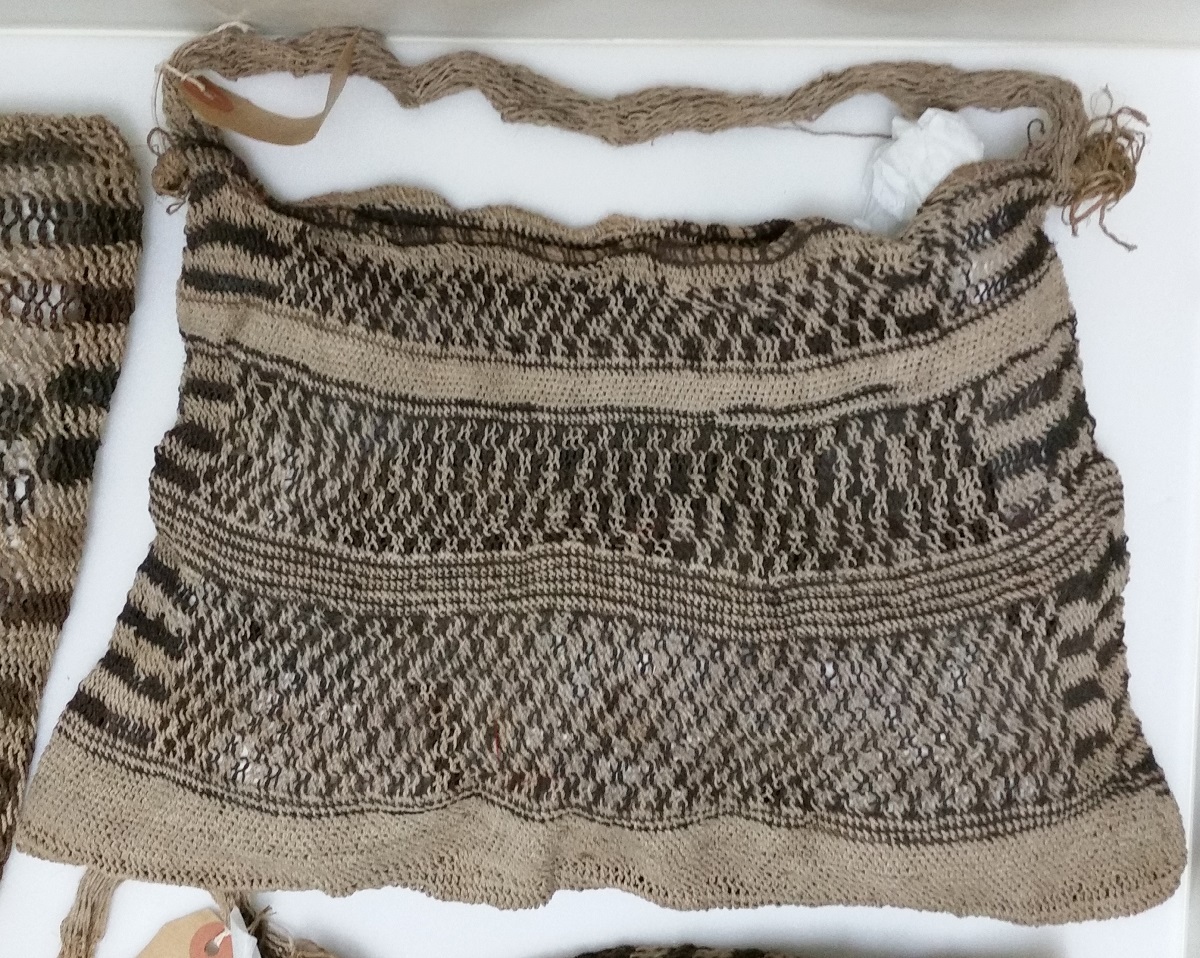Visit any marketplace in Papua New Guinea and your eye will immediately be drawn to brightly-coloured string bags, locally referred to as bilums. Knowledge of the intricate looping technique used to construct these handmade creations is passed from one generation to the next through the female line of the family.

Historically bilums were constructed from natural fibres including sisal, vine and animal fur (see image). In more recent times makers have incorporated wool, twine, nylon and even plastic into their creative practices (see Fig 2). As styles and patterns vary by region bilums are often decorated with a wide array of materials such as pig tusks and teeth, bird feathers, seeds and seashells.
Bilums are used by men and women alike in a variety of ceremonial and utilitarian contexts, with the design of a particular bag dictating its purpose. Bilums are not only vessels for the transportation and storage of goods but also function as body adornments, indicators of status and markers of tribal affiliation.





